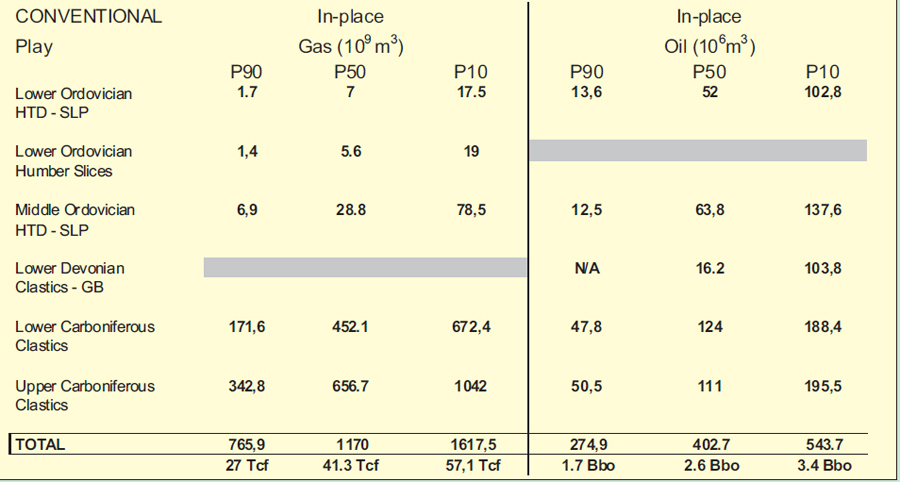Geological Survey of Canada Quantitative Assessment of the Hydrocarbon Resource in the Paleozoic Frontier Basins of Eastern Canada*
*Please refer to Search and Discovery Article #10217 (2009), "Resource Assessment of Oil and Gas Plays in Paleozoic Basins of Eastern Canada."
The Paleozoic successions in eastern Canada belong to three domains, 1) the autochthonous St. Lawrence Platform, underlain by Cambrian to Devonian rocks, 2) the Taconian to Acadian Appalachians formed by Cambrian to Devonian rocks, and 3) autochthonous Carboniferous to Permian rocks. Each succession have onshore and offshore components and contains unique source rock and reservoir units and specific trap types. All of the basins contain producing or discovered hydrocarbon fields but there has been no independent evaluation of their ultimate oil and gas resource potential.
A total of 15 conventional petroleum plays and 3 unconventional gas plays have been recognized in Paleozoic strata. Two conventional plays are recognised in Quaternary sediments. Of the 15 conventional Paleozoic plays, 6 have sufficient exploration and/or production data or good analogues to formulate a full quantitative assessment. Of these 6 plays, 4 are assessed for oil and gas potential, 1 for oil potential, and 1 for gas potential. Given the fact that a large number of conventional and all of the unconventional plays cannot be quantitatively assessed, the total resource presented herein is a minimum potential as evidence for hydrocarbon charge is compelling in most plays.
The assessed plays of the eastern Canada Paleozoic basins have a cumulative median (P50%) in-place potential of 1170x109 m3 (41 Tcf) of natural gas and 403x106 m3 (2.5 BBO) of oil. The Carboniferous Maritimes Basin accounts for about 95% (1109x109 m3 or 39 Tcf) and 60% (235x106 m3 or 1.5 BBO) of the total gas and oil resource potential, respectively.
The assessment results provide important new insights into the energy resource endowment of Paleozoic basins in eastern Canada. In particular, the assessment results indicate Carboniferous basins have a large gas resource potential, much higher than previously estimated. The resource potential numbers represent a minimum potential for the region as many of the conventional and all of the unconventional plays were only qualitatively assessed. The conventional resource potential for Cambrian - Devonian strata may be much higher than reported here, as only 4 of 12 plays were quantitatively assessed. Moreover, the preliminary, not quantitatively evaluated, shale gas potential is assumed to be over 40 Tcf.

Detail of assessment in:
Lavoie, D., Pinet, N., Dietrich, J., Hannigan, P., Castonguay, S.,Hamblin, T., and Giles, P., 2009. Petroleum Resource Assessment, Paleozoic successions of the St. Lawrence Platform and Appalachians of eastern Canada . Geological Survey of Canada, Open File 6174, 275 pages.
AAPG Search and Discover Article #90100©2009 AAPG International Conference and Exhibition 15-18 November 2009, Rio de Janeiro, Brazil
